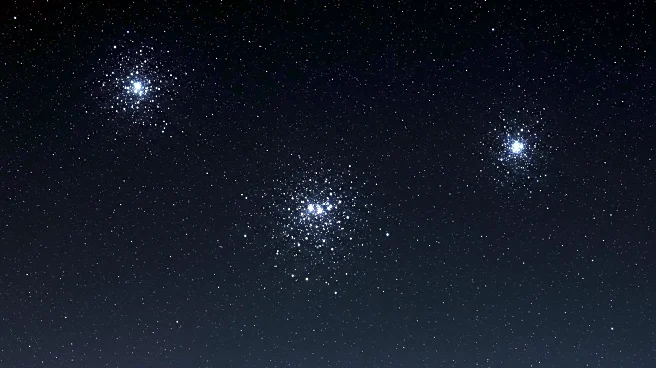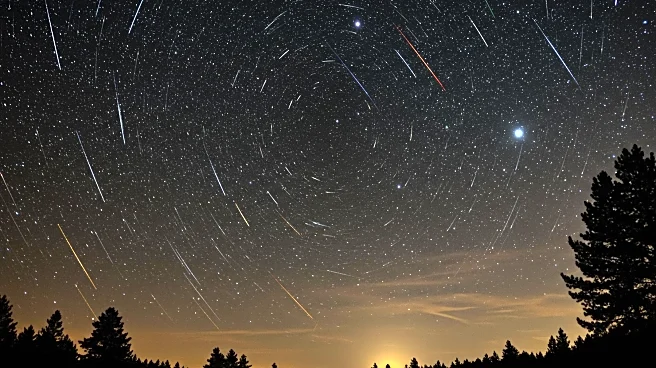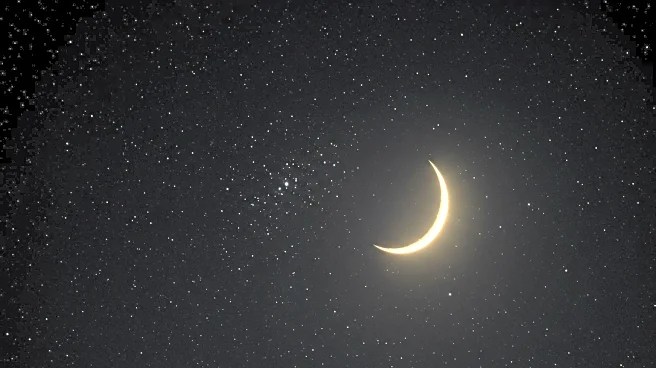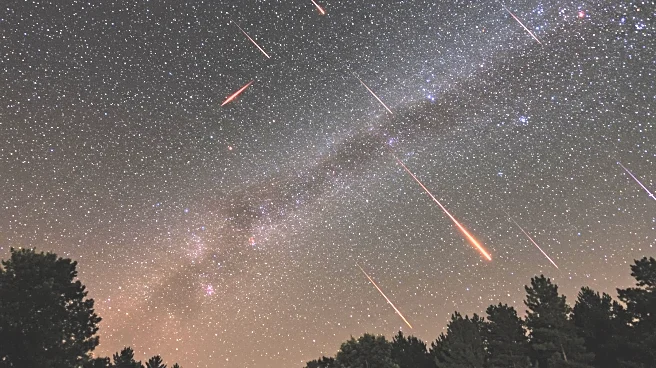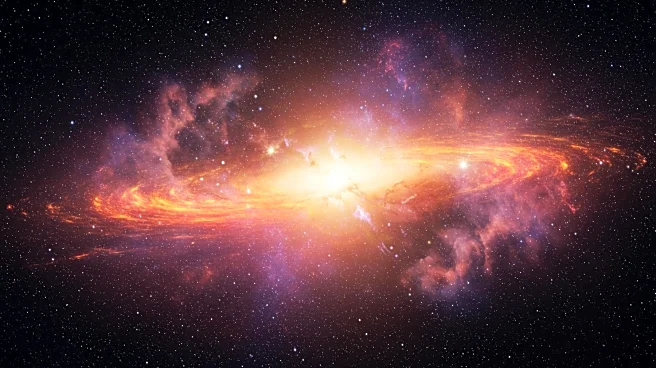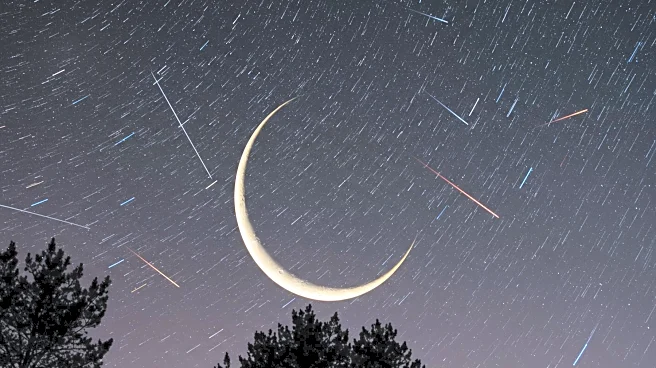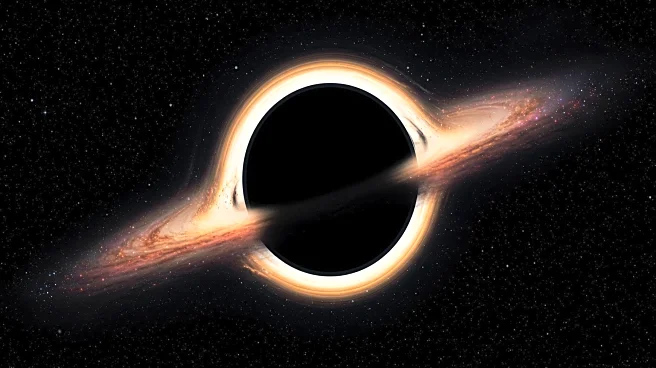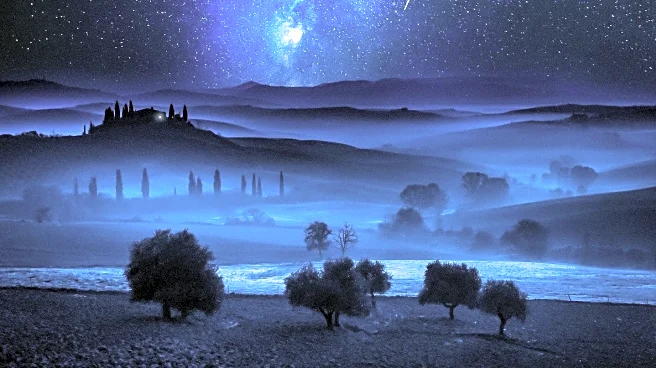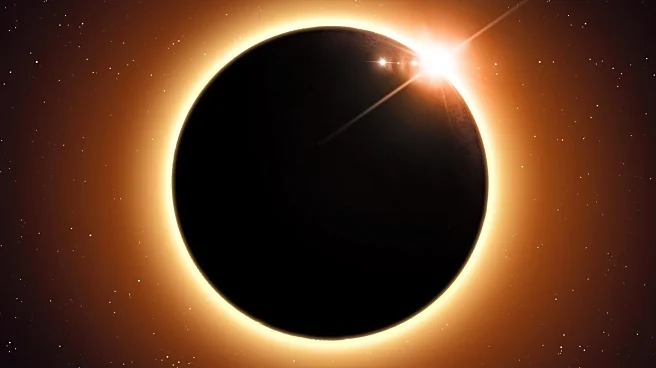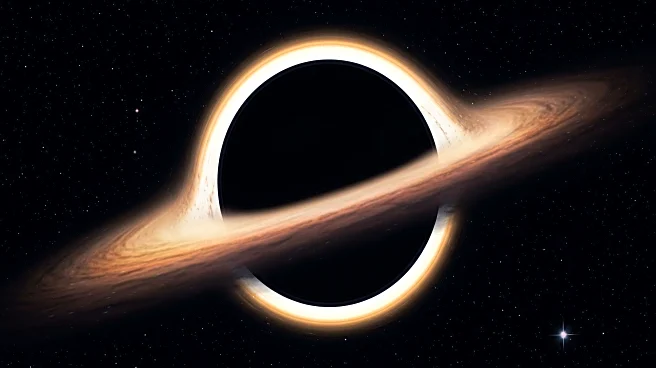Rapid Read • 8 min read
Astronomers are gearing up for a spectacular celestial event in August 2025, as three prominent star clusters become visible to skywatchers in the northern hemisphere. These clusters, known as the Great Hercules Cluster, the Hyades, and the Pleiades, offer a unique opportunity for stargazers to observe some of the oldest and most fascinating stellar formations in the Milky Way. The Great Hercules Cluster, or Messier 13, is a globular cluster located 25,000 light-years away in the constellation Hercules. It contains approximately 100,000 stars and can be spotted between the stars Zeta Herculis and Eta Herculis. The Hyades, an open cluster, is one of the closest to Earth at 150 light-years away, visible in the constellation Taurus. The Pleiades, another open cluster, is famous for its 'Seven Sisters' and is located above the Hyades in the early morning sky.
AD
The visibility of these star clusters provides an excellent opportunity for both amateur and professional astronomers to study the dynamics and evolution of stars within clusters. Observing these clusters can yield insights into the gravitational interactions and lifecycle of stars, contributing to our understanding of galactic formation and evolution. The event also encourages public interest in astronomy, potentially inspiring future generations of scientists and increasing awareness of the importance of space exploration and research. Additionally, the clusters' visibility can boost local economies through increased tourism as enthusiasts travel to optimal viewing locations.
As the clusters become visible, astronomers and enthusiasts are expected to organize viewing events and workshops to educate the public about these celestial phenomena. The use of telescopes and binoculars will enhance the viewing experience, allowing observers to see the clusters in greater detail. Scientific studies may be conducted to analyze the clusters' composition and behavior, contributing to ongoing research in astrophysics. The event may also lead to collaborations between educational institutions and space agencies to promote astronomy education.
The visibility of these star clusters highlights the importance of preserving dark sky locations, which are essential for astronomical observations. Light pollution remains a significant challenge, and events like this underscore the need for policies that protect night skies from excessive artificial lighting. Furthermore, the event may spark discussions on the cultural significance of star clusters, which have been part of human mythology and navigation for centuries.
AD
More Stories You Might Enjoy
